‘What is your favourite country?’ is a question I get asked frequently. But I will never answer it with a straight reply. How can I choose just one when every country is so unique and my experience so incredibly different in each? I will however endeavour to reply with my current top five destinations. Bolivia is a country that seems to consistently (and will probably always) make the cut.
Bolivia is a country like nowhere else in the world – even compared to its South American neighbours. It seems to have its own rules, contradictions and confusing quirks. My favourite example is that people get priests to bless cars to avoid highly common road accidents yet there’s no thought to enforce safe driving practices or infrastructure!
Even the mind-boggling contrasting landscape seems to prove that Bolivia is a law unto itself; arid desert, striking salt flats, geothermal wonders, rugged mountains, ski perfect snow, yet there’s tropical waterfalls and the most beautiful bio-diverse jungle I have ever seen (and yes, even better than the Amazon rainforest in Brazil).
To go from freezing altitudes where water boils at a different temperature, then to humid dense vegetation, proves that Bolivia is a country full of breath-taking surprises.
The wild and rugged scenery of Bolivia inadvertently pushes you into experiences that test your limits and overwhelm all your senses. From mountain biking down the world’s most dangerous road to swimming in alligator infested waters in search of pink dolphins, adrenaline and adventure are clearly two of Bolivia’s most seductive qualities.
Captivated by the scenery and the endless opportunities for adventurous activities in Bolivia, here is my three week journey of exploring some of most iconic terrains in the form of a Bolivia photo diary.
*This post may contain affiliate links meaning should you purchase a product via this link, I’ll earn a small commission at no extra cost to you. See my privacy and disclosure policy for more.*
The Salt Flats
Located within the Andes in Southwest Bolivia you will find the world’s largest salt flat called Salar De Uyuni. It was formed due to a prehistoric lake drying up leaving behind a stark white residue of salt that stretches for thousands of kilometres.
The celestial-like Salt Flat is the most iconic image of the Bolivian landscape and likely one of the most unique vistas in the world.
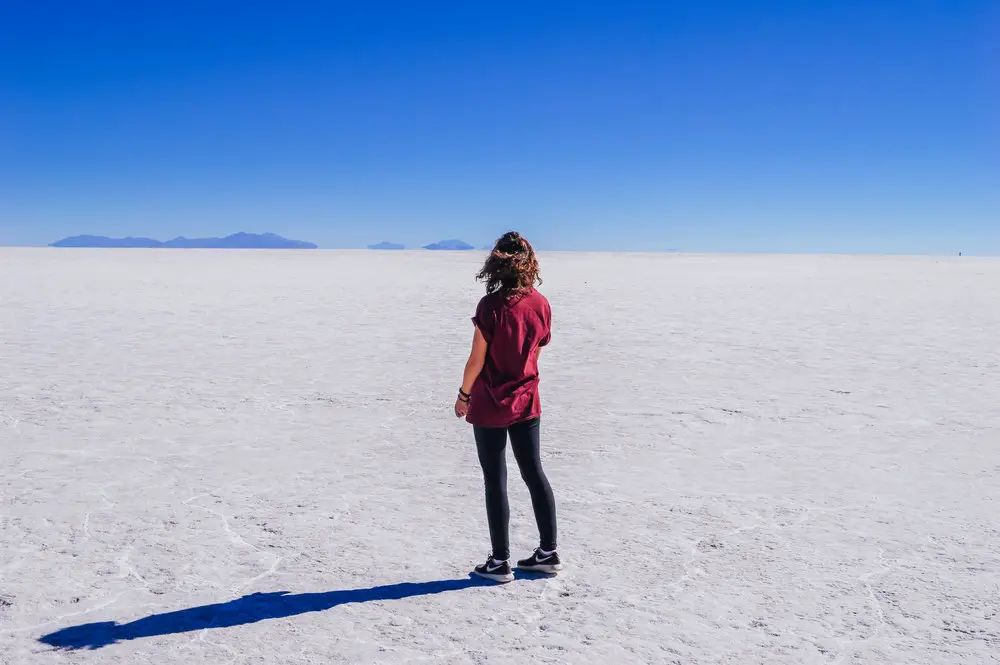
The formations of the salt underfoot varies due to previous atmospheric conditions. Some parts are flat and dusty like a desert, some parts stained with stunning geometric patterns locked together like a puzzle due to evaporating pools of rain, and other areas jagged like icy half-melted snow.
If you’re lucky, you can also catch the salt plains after rain to witness the world’s biggest natural mirror.
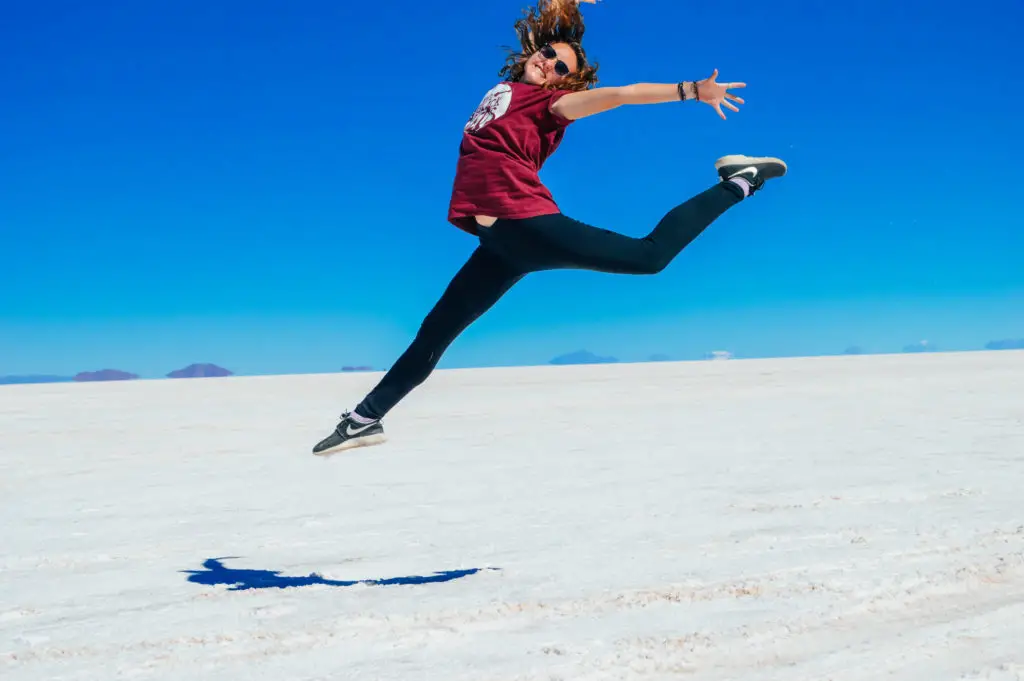
The unique, otherworldy landscape here allows you to have some amateur photography fun by utilising different perspectives and creative ideas.
Although I took many pictures in various poses with different props like a true tourist, me kicking a dino’s ass on what looks like a massive cloud, is my favourite shot.
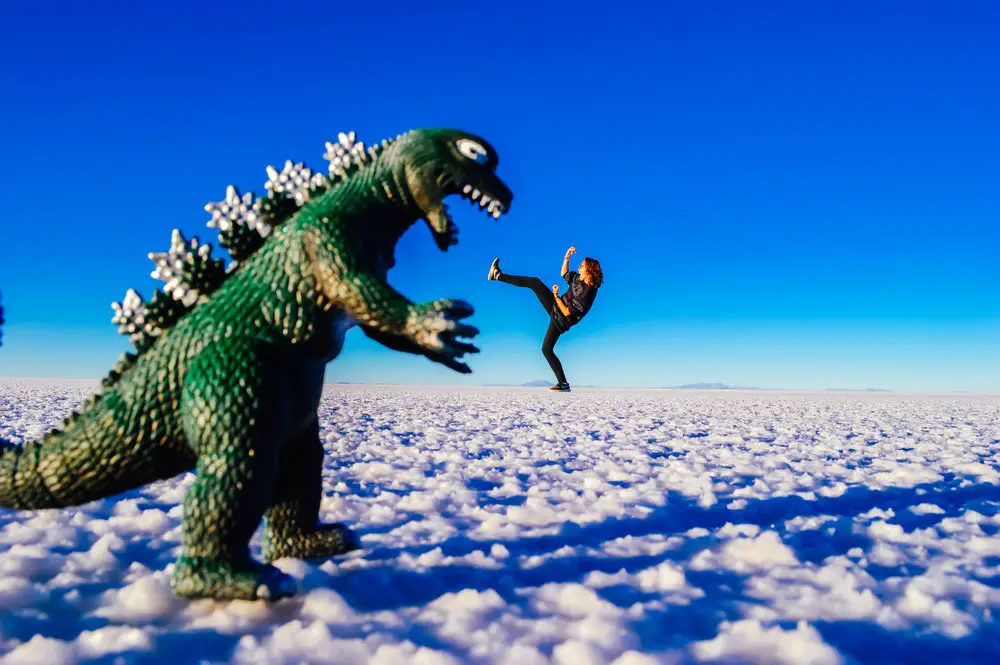
Cactus Islands
Then amongst the seemingly infinite vast white expanse, you can find a few completely random cactus islands dotted around. The one I visited was called Isla Incahuasi.
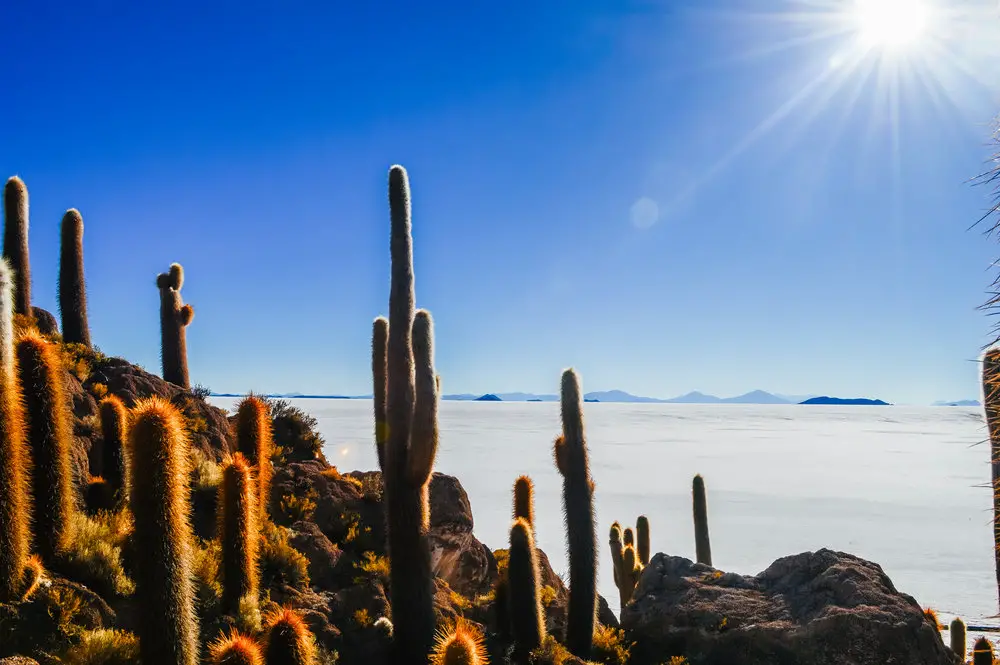
It’s really bizarre that amongst all the nothingness, these isolated rocky outcrops have harboured such an unusual form of life, that contrasts so heavily with the surroundings.
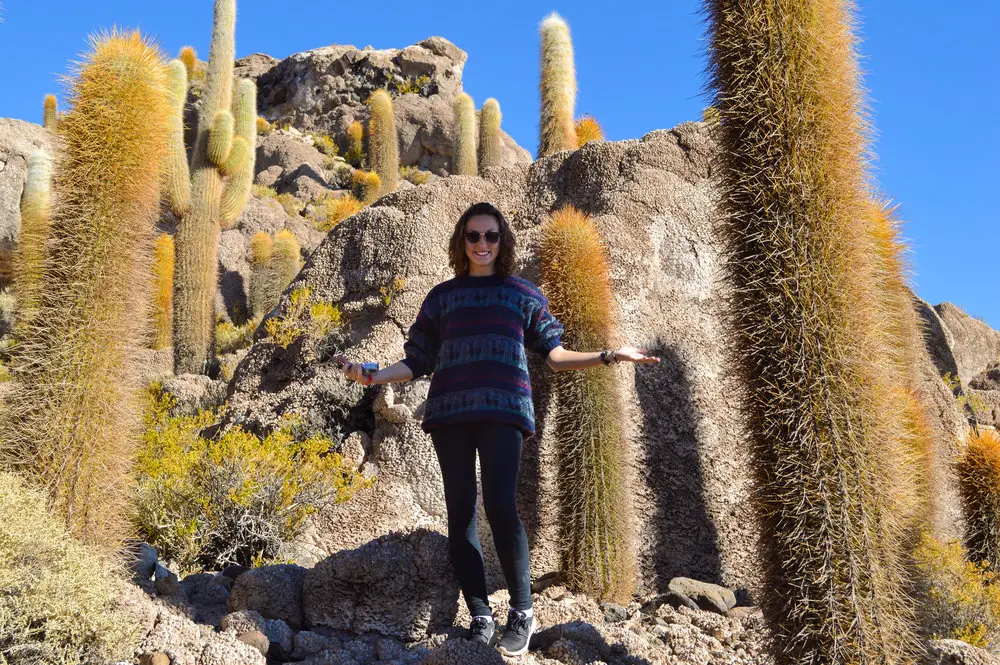
The Lakes
Although wildlife is rare in this harsh ecosystem, flamingos who feed on pink algae within lakes (their diet consequently where they get their colour from), thrive in these extreme conditions.
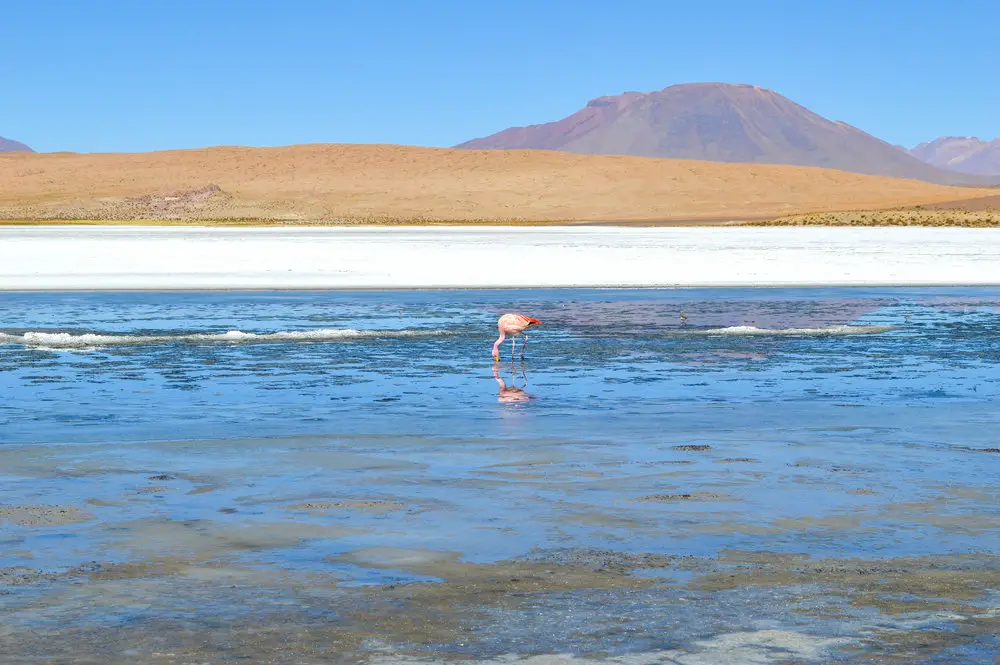
Laguna Colorada is one of the more famous lakes in Uyuni as this pink algae combined with metallic minerals and a backdrop of dusky pink desert hills, makes the water appear a beautiful rusty red.
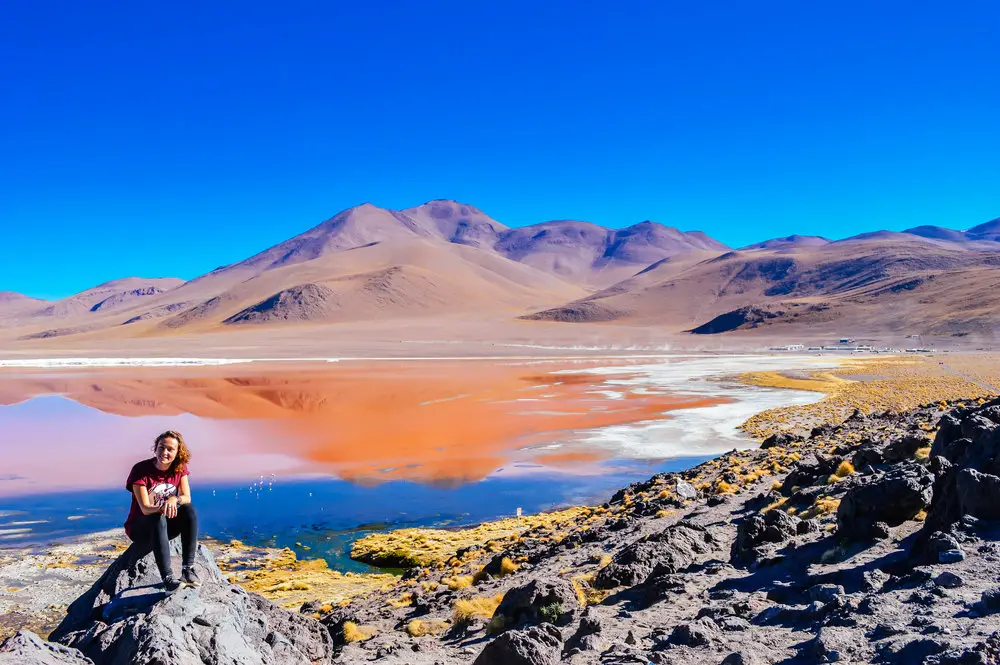
The Desert
The arid desert surrounding the Salt Flats is also a sight to behold. After spending a night in a house made entirely from blocks of salt, we woke early to witness a beautiful glowing pastel sunrise in the middle of it.
Then, once the sun gave us enough light, we headed to some ancient Andean burial grounds set within caves.
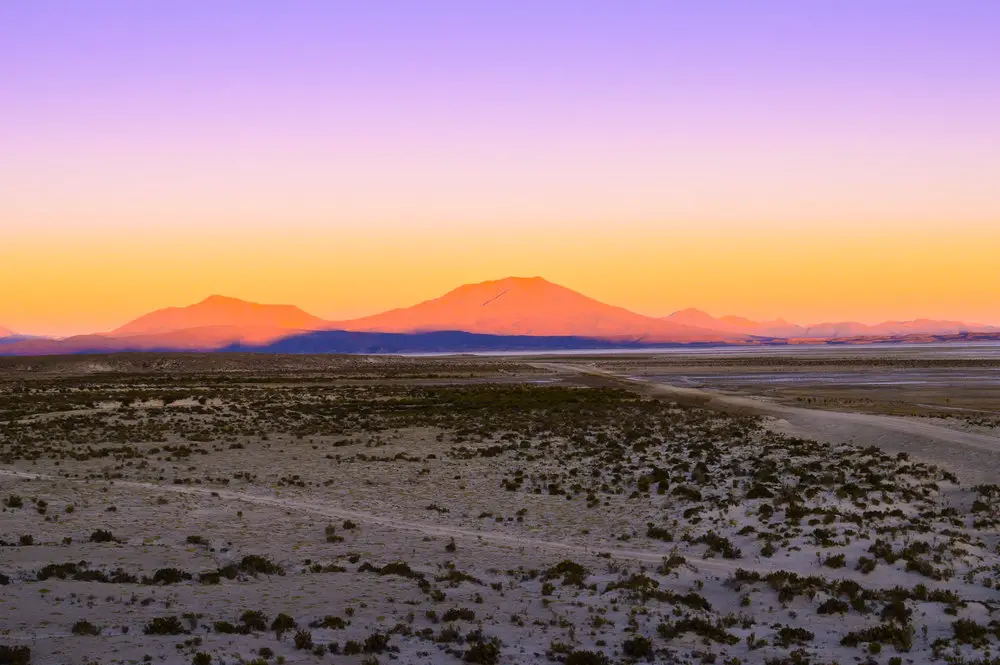
Humans are actually not the only bodies to have been laid to rest out in the Bolivian desert.
Just outside the town of Uyuni you can find a bizarre ‘train cemetery’ where the rusting shells of old locomotives have been abandoned. The result is a slightly eerie but essential pit-stop for tourists on the Salar De Uyuni tour.
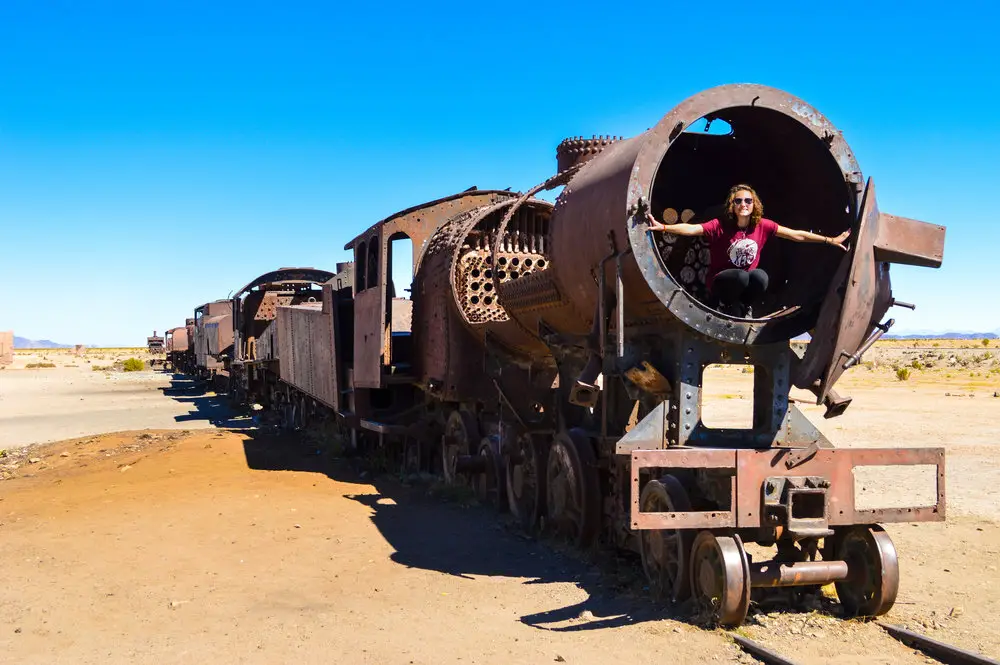
The harsh conditions of the desert have also resulted in some interesting rock formations such as the precariously balanced Árbol de Piedra, translating to ‘stone tree’.
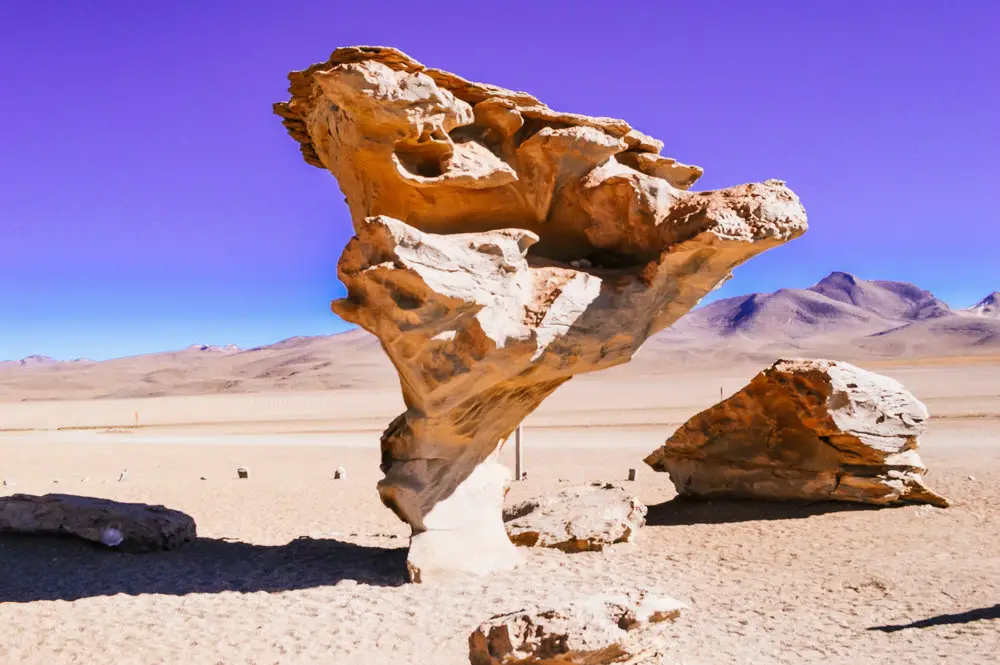
As we left the desert, we saw an Andean Fox running past the jeep. This wild dog descendent (which is sometimes known as a Zorro Culpeo) is a protected species in Bolivia and is usually a nocturnal creature.
As an opportunist predator who eats practically anything, we presumed the poor thing must have been pretty hungry to be out foraging during the day.
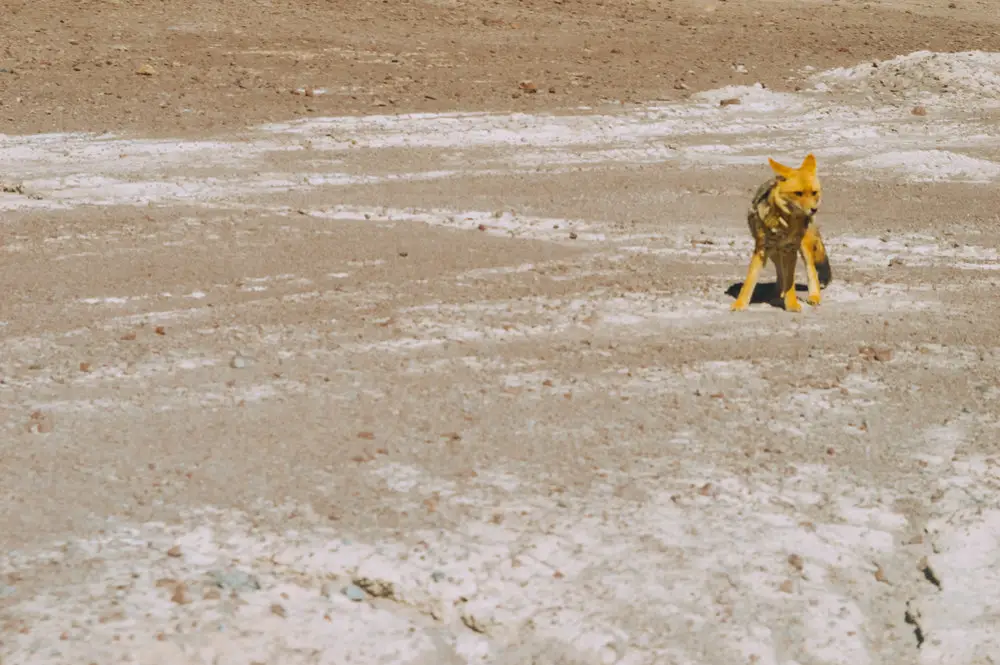
The Wildlife
One of Bolivia’s most beloved national treasures is the very cute (but fiercely sassy) Llama, who is a species native to South America.
Although mainly used for their meat and soft wool, some farmers only own llamas to act as body guards for their small livestock such as chickens and goats. Llamas are said to do an especially great job of scaring away the hungry Andean foxes, above.
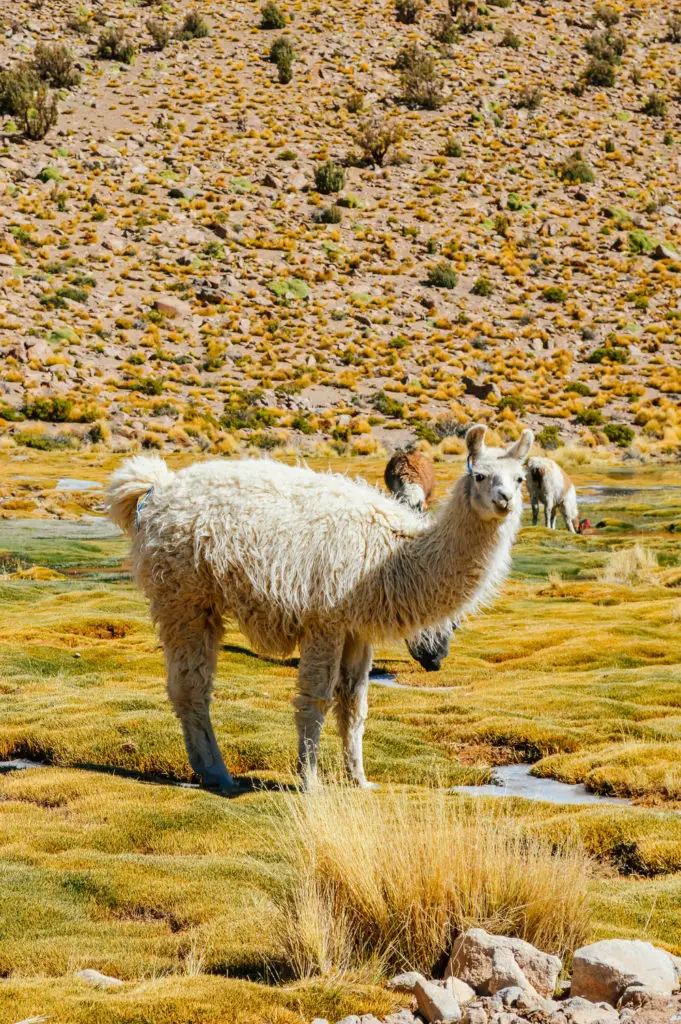
One of the most breath-taking eco-systems I experienced during my tour of South America was the pampas near Rurrenabaque. I spent four days and three nights here exploring the jungle by boat and living with a family in their wooden stilt house on an isolated part of the Beni river.
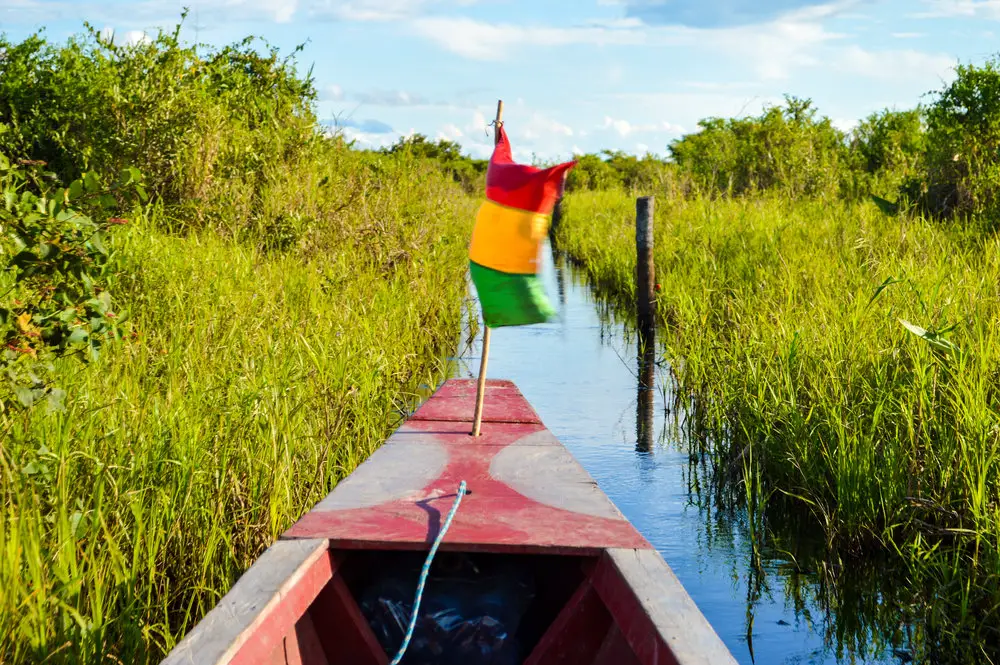
The pampas was absolutely teeming with life; I saw an abundance of monkeys, Capybaras (the largest rodent in the world), sloths, turtles, frogs, snakes, birds and alligators!
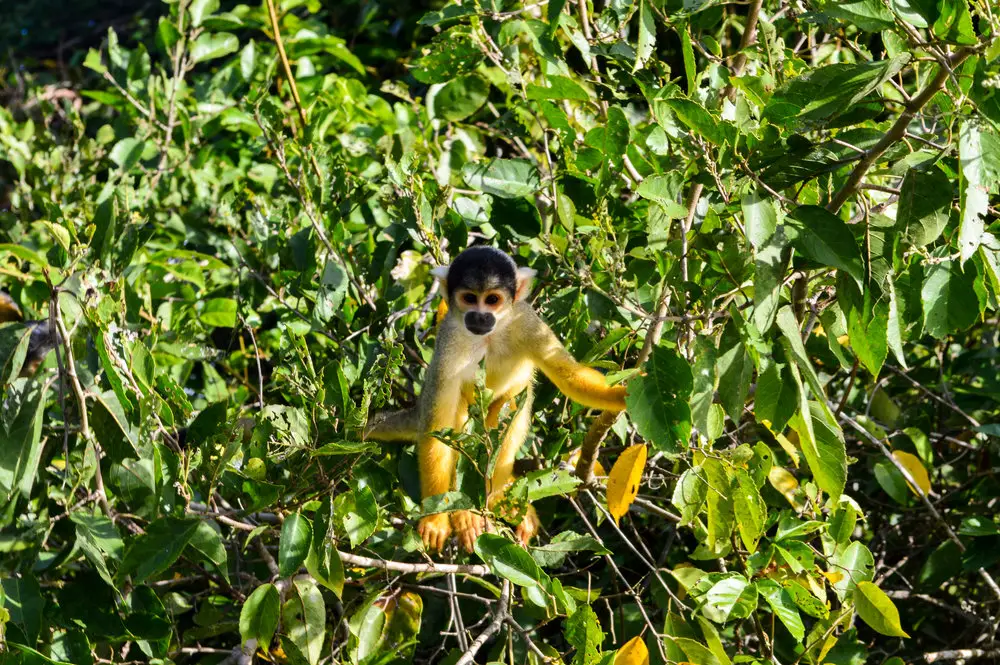
The Rivers
It was actually here, on a boat in the middle of a clearing in the reeds, that I experienced one of the most tranquil moments I have probably ever had in my life; the sights, sounds and smells of the jungle slowly awakening to a stunning golden sunrise.
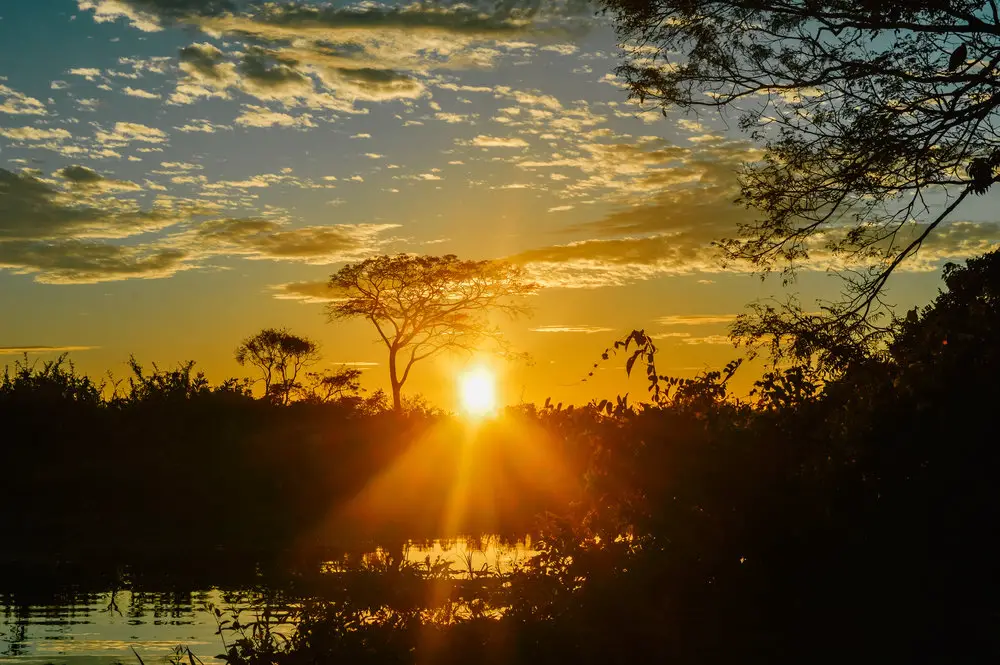
The main reason I decided to look into a pampas trip was because I had been told that you can find elusive pink river dolphins, something I had never heard of existing in the wild before. Slightly dubious that the person who told me was having me on, I was astounded to discover that these (it turns out pretty ugly) pink and grey creatures are indeed real.
Entering the brown and smelly water seemed like the ideal way to get up close and personal with them – the same river we had spotted many piranhas and alligators.
According to our guide the alligators and dolphins don’t like each other though (and therefore steer clear of one another), so we blindly took his word for it.
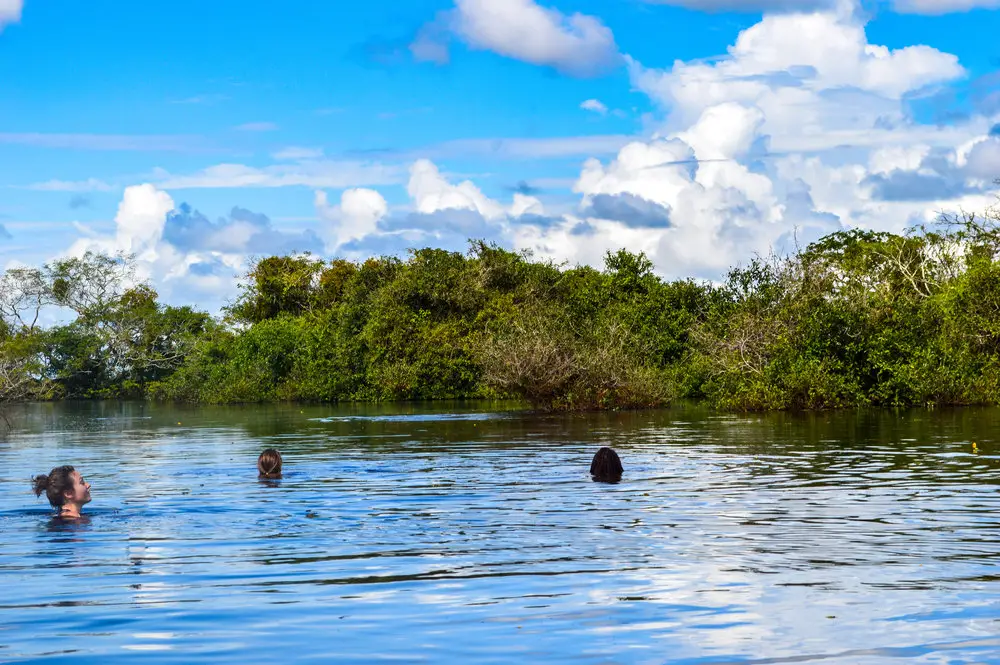
Although we only got brief glimpses of the pink dolphins breaching the water, they occasionally swam by us and viciously nipped our ass!
Joking that it could be the alligators sizing up who was the juiciest, we got back in the boat and headed towards the accommodation. As we pulled away, we saw an alligator feasting on a snake which quickly shut us up.
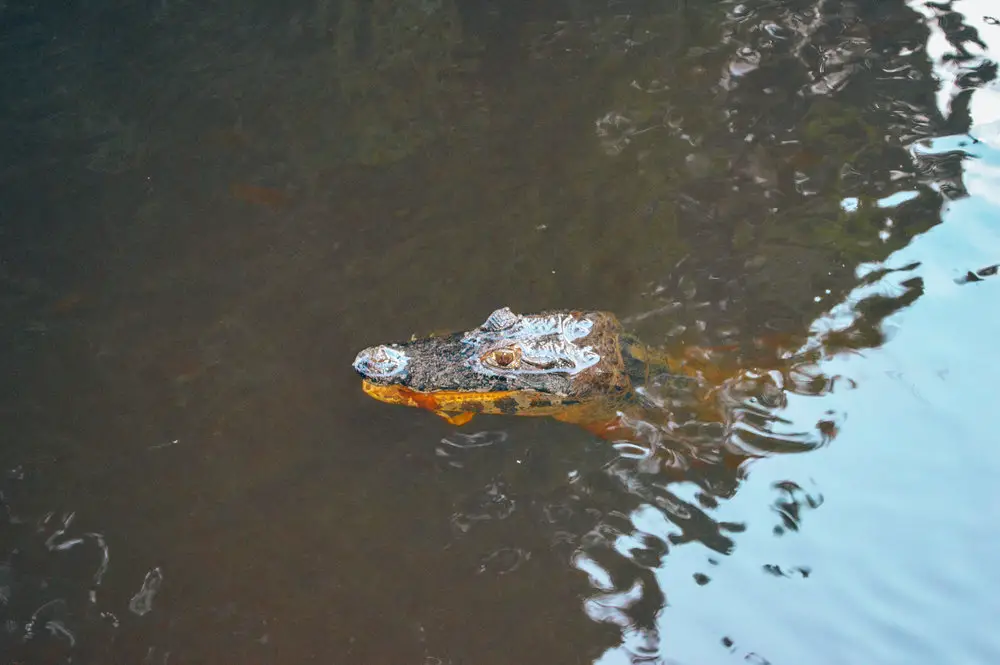
The Extreme Mountains
Swimming in dangerous waters was not the only life threatening thing I found myself doing in Bolivia.
As mentioned in the introduction, driving or being a passenger in Bolivia is a daily brush with death. It may then come to no surprise that Bolivia is home to the world’s most dangerous road, aptly named ‘Death Road’.
This 55km track between La Paz and Coroico is cut into the Cordillera Oriental Mountain range, leaving a sheer drop to one side and is responsible for at least 300 deaths per year.
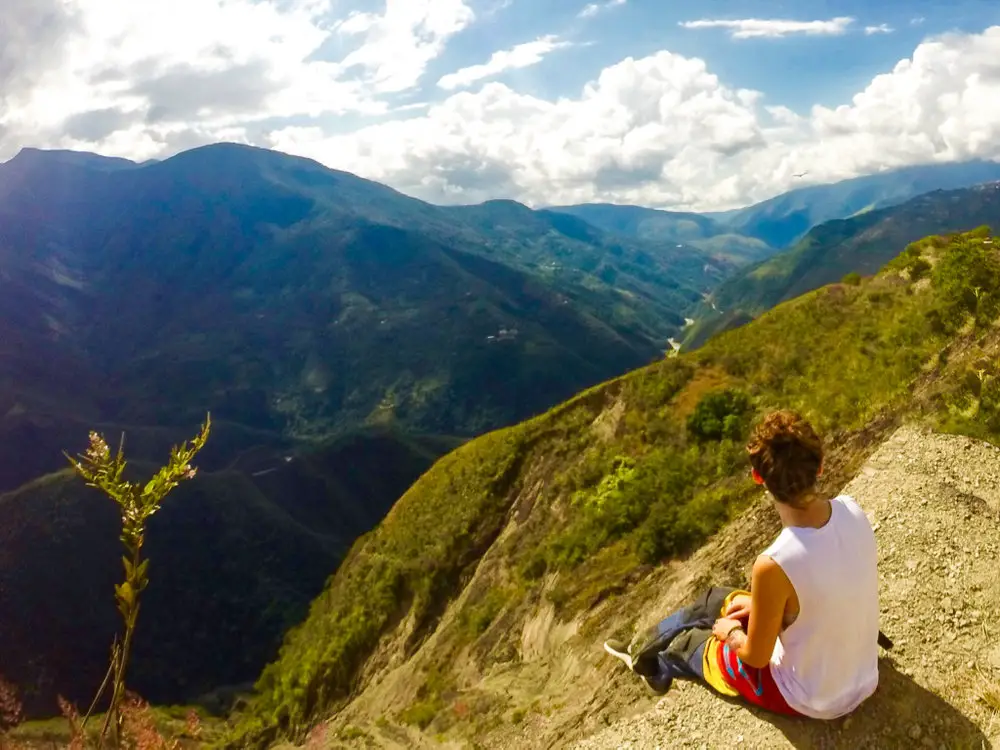
The best part? You can mountain bike down it at high speed.
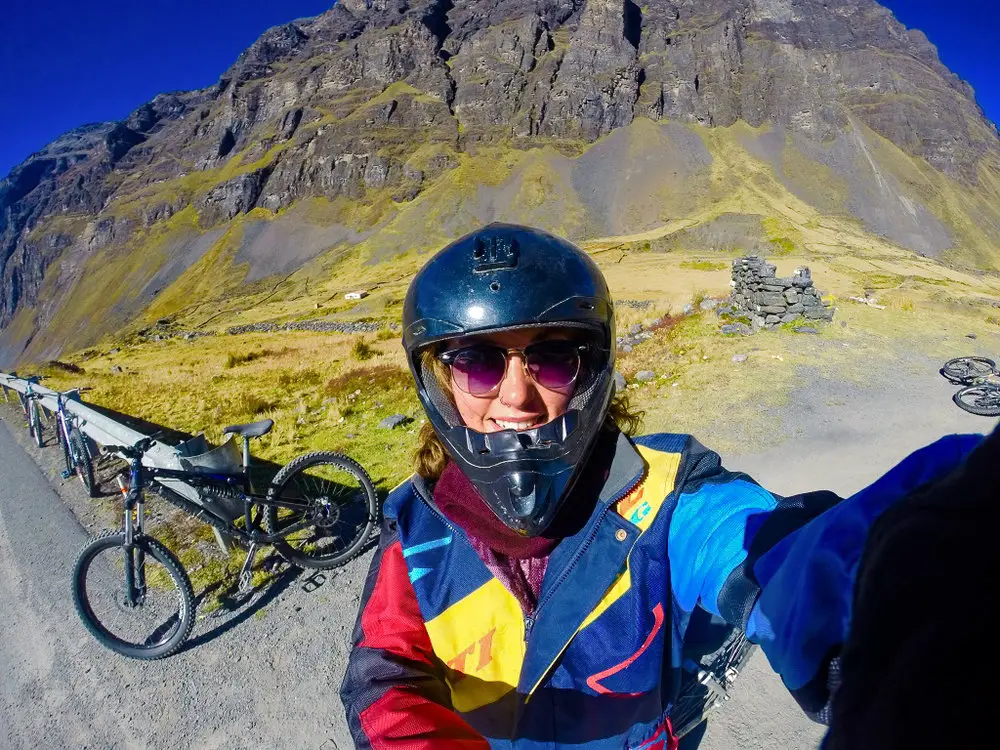
What is initially a perfectly tarmacked downhill ride soon becomes a gravely single track that you share with buses, lorries, jeeps and mini buses, all trying to squeeze past, in both directions!
Along the way, aside from the terrifying but adrenaline inducing drop (that you can’t even see the bottom of), there’s also crucifixes and shrines reminding you of the tragically deceased. Morbid or what.
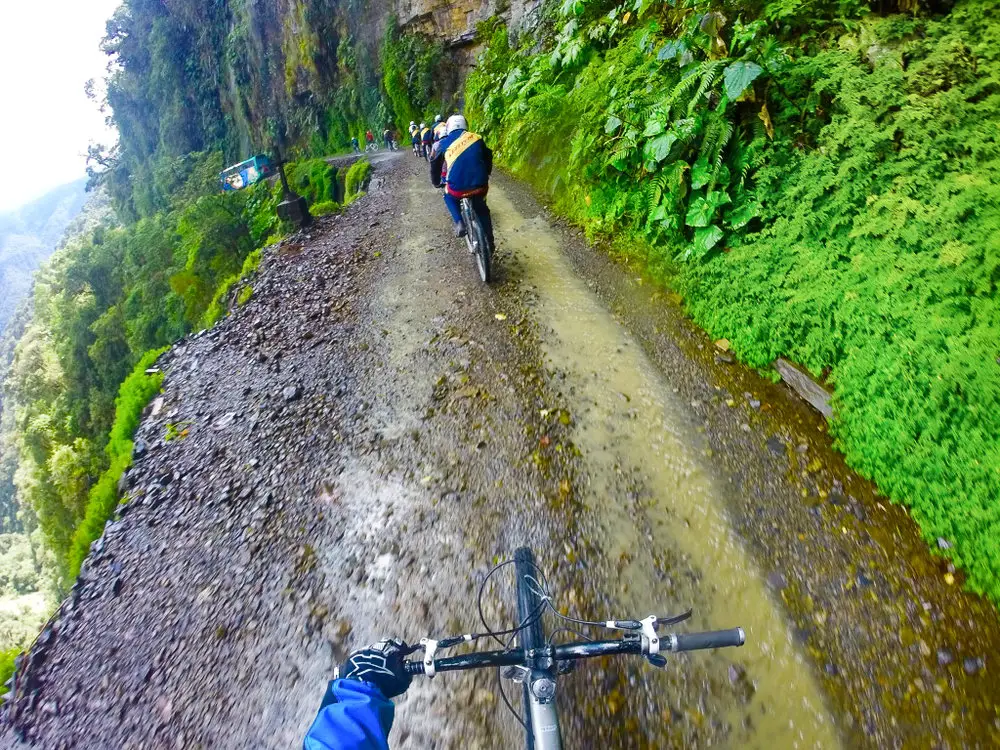
Above all else, mountain biking down Death Road (or officially known as North Yungas Road) is a thrilling and (quite literally) breath-taking way to take in the jagged mountainous landscape between La Paz and Coroico.
So the next time you want a trip with epic scenery and a large helping of adventure, you know where to go..
I hope this Bolivia photo diary has proved just what an incredible place this modest country is!
Going travelling Soon? Don’t forget these essentials!
Flights: compare and search for the cheapest flights using Skyscanner
Accommodation: hotels to hostels, glamping to apartments, I always use Booking.com
Tours: to find the best group tours and activities worldwide (with up to 20% off), use Viator
Visa: don’t forget to check the entry requirements for the passport you are travelling with
Inspiration: to kick-start your next adventure, how about Lonely Planet’s Guide to the World?

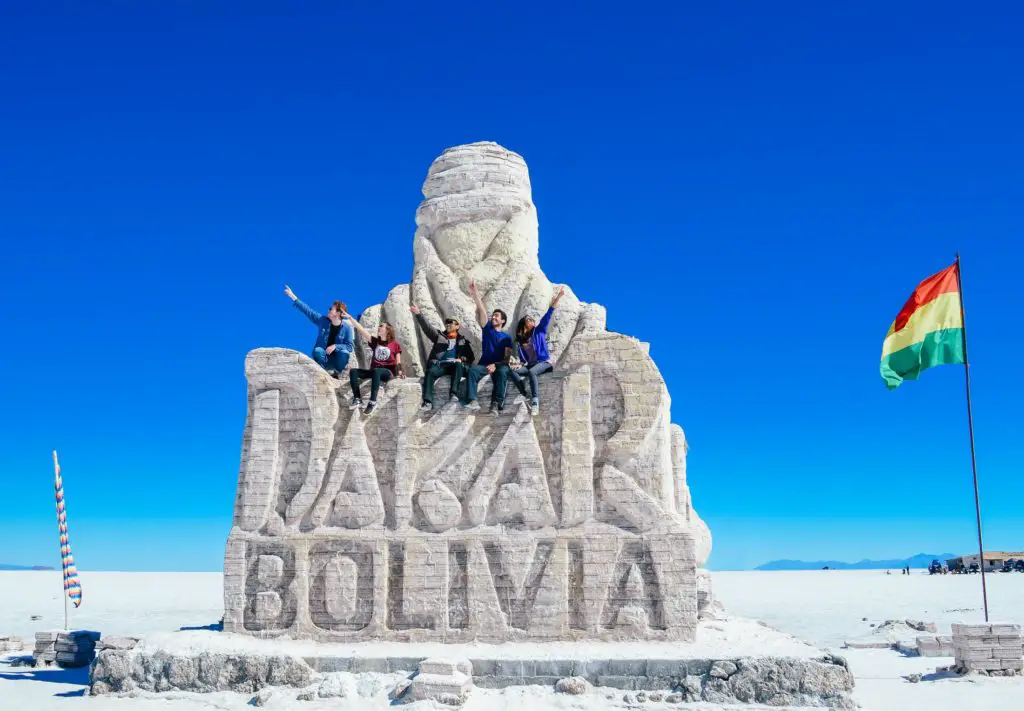
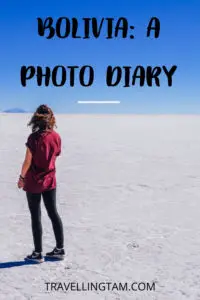
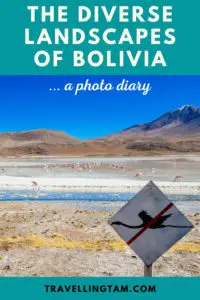
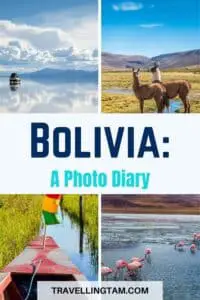
Wow Bolivia has such different landscapes…the photos are amazing!
Wow. Your photos are amazing!
I love your photos! The Salt Flats are really high on my bucket list. I’m hoping I can go this year!
They really are otherworldly, I hope you make it! I wish I saw them after rain..
These pictures are so incredible! I was hoping to get to South America someday soon but well the crisis put an end to planning. Hopefully I can go next year!
Fingers crossed for you!
Bolivia has so many beautiful and diverse landscapes! There is just so much to see throughout the country. The salt flats are at the top of my list – so pretty! I can’t wait to get back to South America.